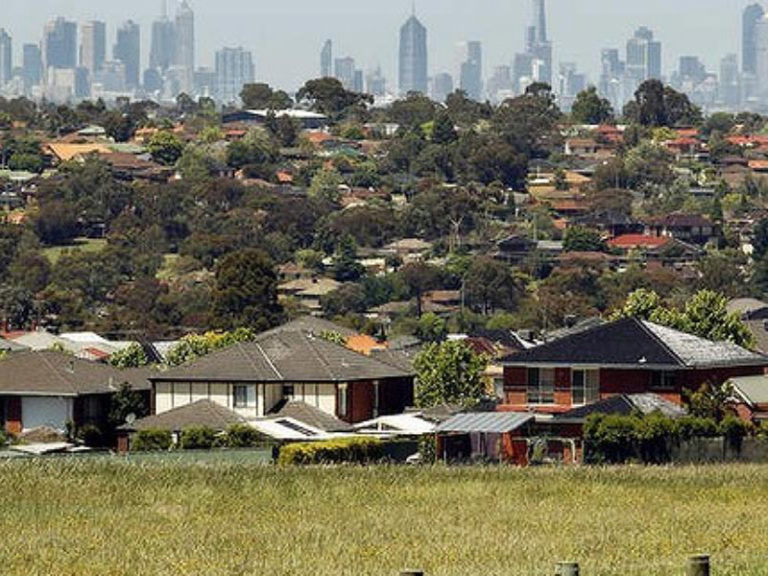https://www.realestate.com.au/property-apartment-vic-sandringham-128416666 Live inside-out high above it all with al fresco entertaining, 5 Star resort facilities and...Read More→

The new scheme will allow homeowners aged 65 and over to use the proceeds of the sale of their home to make a one-off deposit of up to $300,000 into their superannuation fund. Importantly, the $300,000 limit applies per person, so a couple will be able to contribute up to $600,000.
A new reason for downsizing
The aim of this new incentive is to encourage older homeowners to sell their property if it is now too large for their needs, and to enable them to bolster their retirement savings in the process. Under normal conditions, people aged over 65 usually face restrictions on voluntary super contributions, with earnings from contributions above the cap taxed at a higher rate. This new incentive will mean that your ‘downsizer contribution’ will not count towards contribution caps. So homeowners taking advantage of the scheme will get a tax advantage, potentially ending up with even more money for retirement.
What are restrictions when downsizing?
There are several rules that impact on this new incentive. They include:
If you’d like further information about the downsizing incentive, you can go direct to the ATO website.
Of course, if you are looking for advice on the best way to sell your property when downsizing, our experienced team at Floris Antonides Vendor Advocates are always happy to provide you with advice and guidance along the way, and our service won’t cost a cent more than having to deal direct with an agent. Call us today!

But no matter what personal view may be, an increasing number of Melbourne home owners have begun to ask themselves, could I end up selling to a developer?
A checklist for selling to a developer
Whilst your options will vary a great deal depending on which suburb and municipality you live in, your location within that suburb, and how large your block of land is, there are a couple of key factors that you may want to consider.
Do you know your zoning?
In our experience, most property owners only have a vague idea of the zoning of their own home, if at all, and are often totally unaware that it may have changed since they purchased the property. So it’s worth searching on your Council website, or dropping into their offices, to find out exactly what your zoning is, and what types of development are permitted. Even taking a look at what has been happening in your immediate area could give you some insights into what is possible.
Remember, if you know what the developers are allowed to do, you will have a better idea of what your property could be worth to them.
Get advice before selling to a developer
If you do get a knock on the door from a developer who indicates that they are interested in buying, make sure you get sound advice before you agree to anything.
Selling to a developer can be a more complicated type of property sale, both in terms of what conditions the developer may wish to place on the sale, what kind of access they may want prior to settlement, and how long they may want before your sale is completed.
By asking an experienced Advocate to act on your behalf and to choose an agent with experience in this area, you can be sure you are getting the best possible result, both in price and sale terms.
Would your neighbour consider selling to a developer too?
In the right circumstances, you may be able to do even better if you join forces with one or more neighbours when selling to a developer. We have seen several situations where two, three or even more adjoining properties are sold as one. In the right area, this option can be worth a great deal to a developer, enabling them to pay a higher price per property than when buying a single block.
With the right planning, each owner has the potential to benefit, gaining a percentage of the added price. But again, it is vital to get the right advice from the right people before you proceed with an option like this.
If you think your property may have development potential, why not give one of our team at Ian Reid Vendor Advocates a call to talk about what is possible. Of course, even if you are not selling to a developer, you’ll find lots of helpful information in our FREE booklet, Fatal Real Estate Traps Exposed, so why not download a copy while you’re here on our website?

Figures from the Australian Prudential Regulation Authority, (APRA), released this week showed that the value of new mortgages with a loan-to-value ratio of more than 90 per cent dropped to just under $5.8 billion in the March quarter of this year. This was the lowest that this figure has been since SAPRA began tracking this data in 2008.
This figure represents less than 6.7 percent of the total of all new loans approved in the first three months of 2018 and is a drop of 16 percent on the same quarter in 2107. In further signs of a tightening of the market, the total amount of all new lending for residential property in the March quarter was down by close to $2.5 billion from one year ago.
The figures from APRA confirm recent trends that several of the independent mortgage brokers have been talking about. Earlier this week, one of the major online home loan sites published figures suggesting that less than a third (32 percent) of the loans currently being offered in the market were available with a 95 percent loan-to-value ratio. Three years ago that ratio was 76 percent!
The word from a number of brokers that we have spoken to is that we are in a market where an increasing number of lenders will not accept home loan applications unless you have a 20 percent deposit. This is a big ask for many buyers, particularly those trying to buy their first home.
Changes in the market like these are just one more reason that all of us at Ian Reid Vendor Advocates recommend obtaining the assistance of an independent mortgage broker before you commit to any deal offered by your bank.
Of course, if you are looking at interest rates with a view to making a move in 2018, make sure you get your FREE copy of our booklet, Fatal Real Estate Traps Exposed, while you’re here on our website.

In order to be eligible for a reduction in stamp duty, you will need to hold one of the relevant concession cards, such as a Pensioner Concession card or a Commonwealth Seniors Health card from the DHS or DVA. It is also important to keep in mind that these savings only apply to a property that you intend to use as your principal place of residence, so it does not include holiday homes or investment properties.
Assuming you qualify under the terms above, you should have a choice of two options in reducing your costs when purchasing a property. The ‘stamp duty exemption or concession’ means that if you purchase a property for up to $600,000, you will not be required to pay any stamp duty at all. If your purchase price is between $600,000 and $750,000, you will be eligible for a substantial reduction in the stamp duty payable. These incentives are exactly the same as a first home buyer would receive and apply to both established and brand-new residences.
The other option that may apply to qualified pensioners is the ‘pensioner exemption/concession’.
This one-off incentive applies to homes valued up to $750,000. The full exemption applies up to $330,000, whilst the concession applies on purchases between $330,000 and $750,000.
The key message here is to seek some advice from an experienced advisor before you decide which assistance package is mot applicable to your circumstances, (you can’t apply for both).
The other feature of this program that some readers may need to consider is that at least part of these assistance measures will still apply where an eligible pensioner is purchasing a property with someone who is not eligible.
Again, it is important to seek out professional advice in this situation, so that you can be sure you are getting the full advantage of these stamp duty savings on your share of the property purchase. If you have any question, there is quite a lot of information on this process at the State Revenue Office’s website, which can be found at www.sro.vic.gov.au.
Of course, if you are selling a property to make this move, our experienced team at Floris Antonides’s Vendor Advocates are always happy to provide you with advice and guidance along the way, and our service won’t cost a cent more than having to deal direct with an agent. Call us toda.

Even if you only have a passing interest in the property market, you will have come across references to the weekly “auction clearance rate”. Despite its common usage, however, many people are unsure how this popular market indicator is calculated.
What does the auction clearance rate tell us?
The auction clearance rate is published each week, providing a regular indication of the percentage of the properties offered for auction that were sold. Generally, the higher the percentage gets, the stronger the demand for property, so it provides an ongoing measure of the strength of demand in the property market.
Why are there different clearance rates?
Not surprisingly, people are confused by the fact that there are different clearance rates published by different sources for the same markets. The simple reason for this is that not everyone gets all the agents’ auction results each week. Indeed, if you look closely at the data, you’ll see that each set of statistics reports a different number of auction results, even though they are reporting on the same market on the same week.
Here at Ian Reid’s Vendor Advocacy, we usually rely on the auction statistics from the REIV. This is because the REIV tends to receive the results of a larger pool of agents, and therefore provide a more complete picture of what is happening in the Victorian market.
How is it calculated?
Each week, the REIV collects over 90% of all the auction results across Victoria. They then divide the total number of properties sold at auction (including those sold before or immediately after auction) by the total number of auctions reported. It is worth noting that the REIV publishes two separate clearance rates each week. A preliminary rate is published on Saturday evenings, whilst a more complete figure is not released until the middle of the following week.
Readers should also be aware that the REIV only classifies properties as ‘sold after auction’ if they sell on the day of the auction, allowing for a short period of post auction negotiations. If a property is sold two days after the auction it is classified as a private sale, even if that sale is negotiated with one of the bidders from the auction.
Assessing the percentages
When weighing up an auction clearance rate, it is important to assess the percentage alongside the number of auctions held. For example, a high auction clearance rate on a week when there are very few auctions can simply reflect increased competition due to a lack of choice. Similarly, a lower clearance rate on a weekend when there more than 1,000 auctions scheduled, (or a ‘Super Saturday’ as the media often calls them), is not necessarily a sign of slower demand.
We also need to remember that overall auction numbers can vary markedly from week to the next due to a variety of factors. Long weekends, public holidays, major sporting events, school holiday periods and religious holidays are just some of the factors that can affect auction timing.
Understanding the property market
Whilst auction clearance rates can provide some insights into buyer sentiment in the property market, these figures are just one of several statistics that can be used, and some of the best market indicators don’t involve statistics at all. For example, one of the easiest and most effective ways to measure what is happening in your own local property market is to get out and attend a few Open Houses and Auctions yourself. You’ll soon get a feel for how many buyers are active, and what type of properties they are most interested in.
Of course, if you do have questions about selling your home, you’ll find lots of tips in our FREE book, Fatal Real Estate Traps Exposed, or you can call the Customer Service team at Floris Antonides’s Vendor Advocacy any time.

Assisted by improved incentives for first home buyers, the majority of outer suburbs in municipalities like Hume, Casey, Wyndham and Whittlesea have recorded very strong growth in median prices over the past twelve months, clearly out-performing the Melbourne average. In fact, many have recorded price growth above 20 per cent, whilst some have even topped 30 per cent.
A prime example of this trend is the City of Casey, one of the fastest growing area in Melbourne’s south-east, where eight different suburbs recorded more than 300 property sales in the past year. These included Narre Warren, Clyde North and Cranbourne North, (with more than 450 house sales each), and Berwick with more than 700 house sales in the year.
Every suburb in the City of Casey had double-digit growth in median house prices last year. Cranbourne, Hallam, Cranbourne East, Hampton Park and Narre Warren all recorded median growth over 20 per cent in that period.
A similar scenario took place in the City of Whittlesea, on Melbourne’s northern fringe. Four suburbs in this area recorded over 400 house sales last year, whilst another five saw between 200 and 300 sales. As a result, every suburb in Whittlesea experienced double-digit price growth whilst four (Lalor, Epping, Mernda and South Morang) recorded price growth of over 20 percent and Thomastown recorded a remarkable 33 percent.
Other outer suburban areas such as Hume and Melton in the north-west and Wyndham in the south-west also experienced similarly large sales numbers, with price growth also out-performing the Melbourne average.
Clearly, the strength of demand in Melbourne’s outer suburbs confirms the perception that for many people, proximity to the CBD is no longer a key factor in determining where to live. Easy access to employment has always been a factor for most buyers, but the reality is that most people work in the suburbs, not in the CBD.
In a market that became increasingly price sensitive as the year went by, it is clear that affordable housing, particularly in areas that were reasonably well serviced with infrastructure and has ready access to employment centres, attracted the attention of a steadily growing number of home buyers.
If you have questions about how your own local property market has been performing in the past year or so, or you are wondering how to maximise the price you achieve when you sell in the current market, don’t hesitate to give the team at Floris Antoindes Vendor Advocates a call. You can also get a FREE copy of our booklet, Fatal Real Estate Traps Exposed, while you’re here on our website.